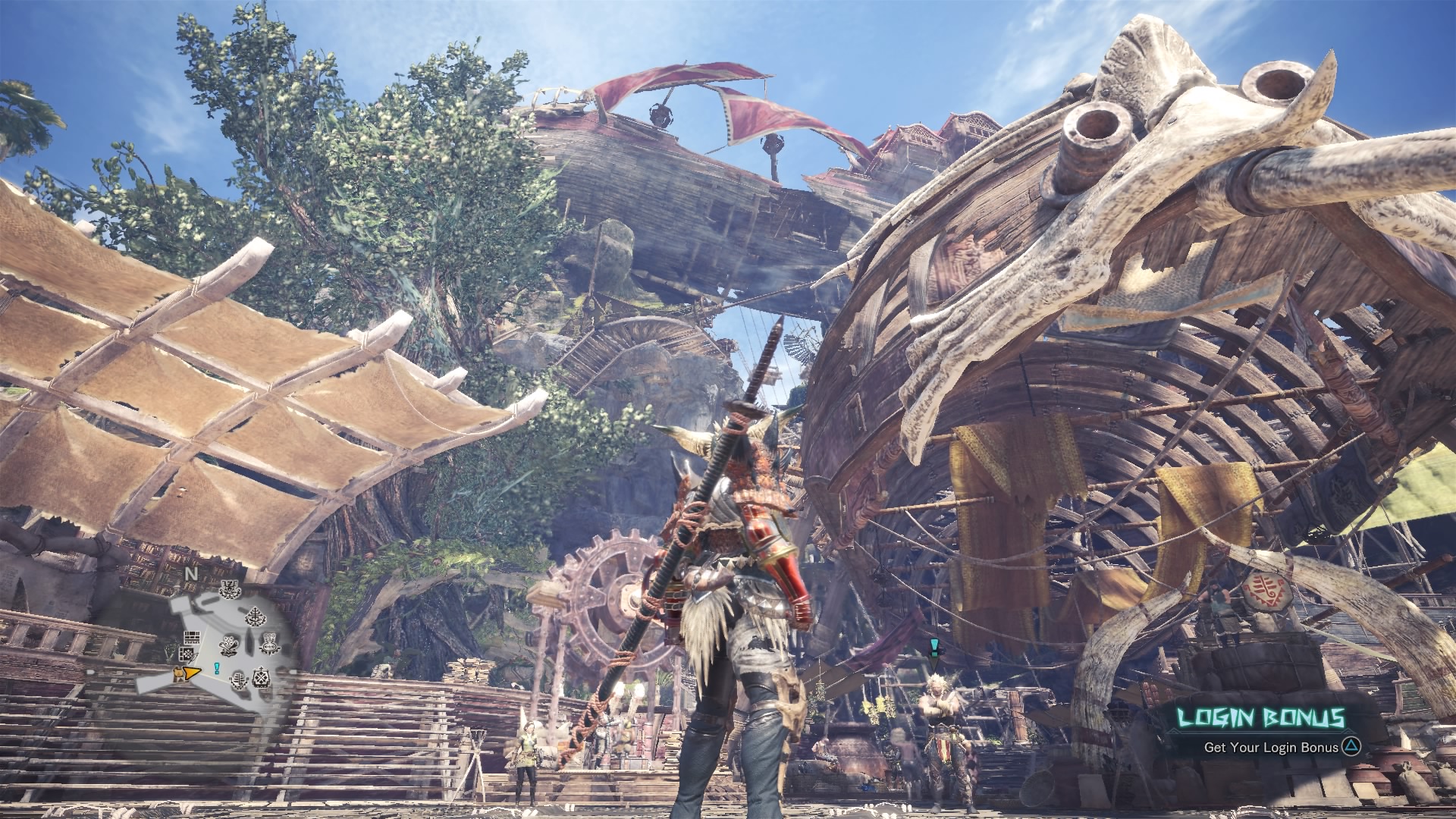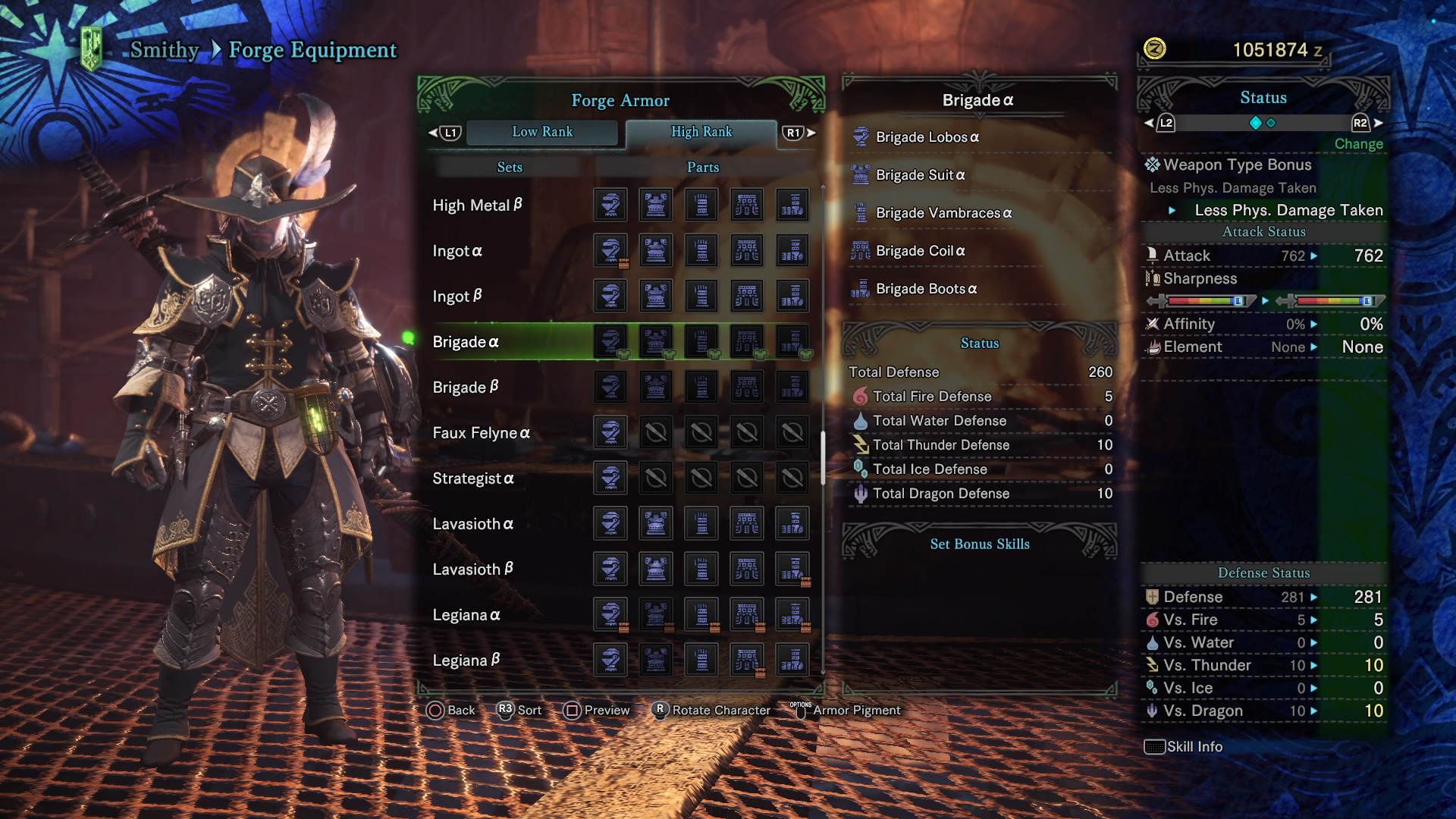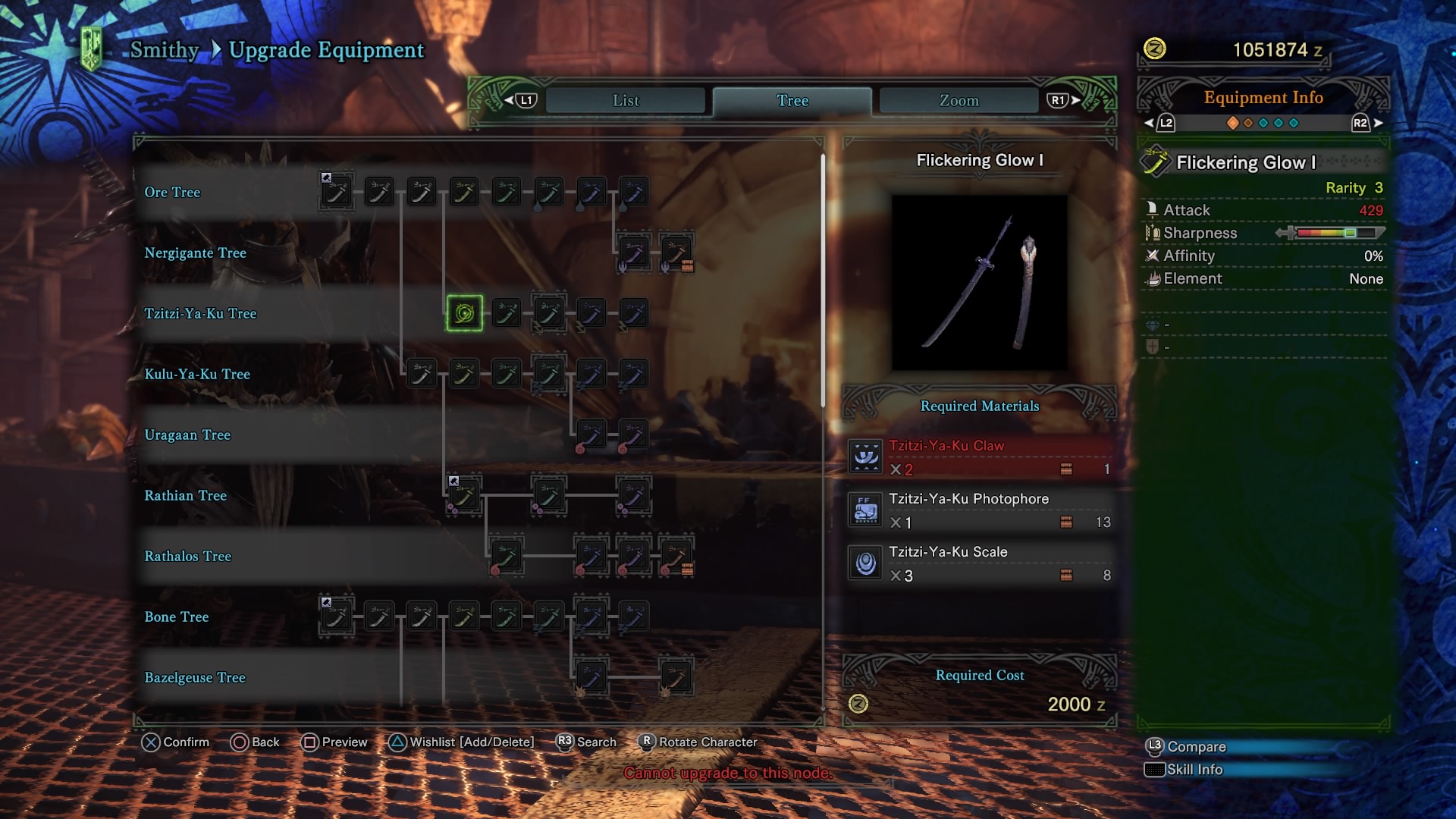Monster Hunter: World beginner's guide to weapons, armor, hunting and more
Tips and tricks, and the best armor and weapons for beginners.

You might think that a game about beating dinosaurs to death using their own butts mounted on sticks would be pretty straightforward, but Monster Hunter: World is actually an incredibly, and sometimes needlessly complex action RPG. It has as many nuanced systems as it does big-ol' dinosaurs, and it's got like 30 of those, so there's definitely plenty to learn. You've got to start somewhere, and seeing as how you're already here, you may as well start with our guide to the essentials and basics of Monster Hunter: World.
For more detailed guides check out our deep look at Monster Hunter: World's weapons and monsters.
What do you do in this game?
You may have figured this out from the title, but: you hunt monsters. Monster Hunter: World is a third-person action RPG about fighting giant monsters and basically nothing else. You'll cull some little guys every now and then, but it's pretty much all boss fights, all the time. The core game loop is this: kill a monster, carve it up for materials, use those materials to craft new gear, then kill a bigger monster. Or kill that same monster again, but better. You can also capture monsters to get even more materials out of them.
Beyond that, Monster Hunter: World is all about setting your own goals. Crafting a prettier armor set, forging a stronger weapon, killing a monster even faster than the last time you killed it—you can do whatever you want, as long as it involves hunting monsters.
OK, how do I hunt monsters?
There are three mission types in Monster Hunter: World: quests, investigations and expeditions. We'll start with quests since they're the most important.
Quests are ranked according to their difficulty and are split into two groups: assigned and optional. Assigned quests are basically story quests. Monster Hunter: World's story is essentially a series of excuses to hunt monsters—though there are some cool characters and it's exciting to see the world expand as you go—but there is still a campaign of sorts. By completing assigned quests, you'll unlock new areas, utilities, characters and, most importantly, monsters. You'll also increase your Hunter Rank, which unlocks new quests, including some optional ones.
Optional quests are just as important as assigned quests because they unlock upgrades for your items and Astera, the game's main hub. Some optional quests appear automatically, but some can only be gotten by talking to NPCs found in Astera and around the world. So, always check your map for new optional quests when you explore a new area or return to the hub. You launch optional quests the same way you do assigned quests: by reading the quest board or talking to your handler. Optional quests also include DLC and limited-time event quests.
Keep up to date with the most important stories and the best deals, as picked by the PC Gamer team.

Moving on from quests, you'll also accrue investigations as you hunt monsters. Like quests, investigations give you a target monster to hunt. Unlike quests, they come with special conditions like environmental modifiers and limited attempts. They also yield bonus rewards indicated by bronze, silver and gold medals. These bonus rewards make investigations the best source of monster materials, especially rare materials like plates and gems. To start an investigation, first you have to register it at the research center in Astera. Once you do, you can launch it like you would any quest.
Finally, we have expeditions. You can start an expedition by traveling to an area without launching a quest or investigation. This lets you explore that area to your heart's content, hunting whatever monsters you come across and gathering as many materials as you'd like. And you really should gather everything in sight. Everything is useful, and it takes no time to snatch up some honey or herbs as you run by. Expeditions have no time limit and no faint limit, but you won't earn any bonus rewards when you finish them (by returning to Astera). This makes expeditions ideal for exploring and gathering, testing new weapons, or building up investigations by hunting random monsters.
What's this Astera place you keep talking about?
Astera is the main hub of Monster Hunter: World not to mention the place you save your game—Monster Hunter: World does not have auto-save—so you're going to spend a lot of time there. It's also home to several important utilities. Those are:
The canteen, which you should visit before every hunt to grab some food and food buffs.
Merchants who sell essential consumables like potions as well as basic crafting materials.
The smithy where you craft new armor and weapons.
The botanical research garden which you can use to passively duplicate herbs and other resources as you hunt.
The research center where you can manage investigations and pick up sidequest-like bounties. (Always stay topped up on these bounties! You'll complete them naturally as you hunt, and they're a great source of materials.)
The gathering hub which doubles as the multiplayer social hub for Monster Hunter: World. If you want to play with friends, which you totally should, you'll spend a lot of time here.
Your private room where you can customize your appearance and interact with your Palico companion.
And the training grounds where you can test out different weapons.

Speaking of weapons, I hear there are a lot of those.
There are! There are 14, in fact, with 11 melee weapons and three ranged, each with their own unique attacks and play style. Here's the full list:
- Great Sword
- Long Sword
- Sword and Shield
- Dual Blades
- Hammer
- Hunting Horn
- Lance
- Gunlance
- Switch Axe
- Charge Blade
- Insect Glaive
- Light Bowgun
- Heavy Bowgun
- Bow
What are the best weapons for beginners?
As you can imagine, many people, especially new players, often struggle to choose a weapon. Just remember that there are no wrong choices. All 14 weapons are powerful and fun. More to the point, I strongly encourage trying all of them for yourself and using multiple weapons on a regular basis, but to make things easier, allow me to recommend a few beginner-friendly weapons.
Sword and Shield
A fast, well-balanced weapon which is great for beginners and experts alike. Use the sword in quick slashing combos, and use the shield to bludgeon monsters or block attacks. The sword and shield is the only weapon that allows you to use items like health potions while you have your weapon out. You can also use your slinger with the sword and shield equipped.

Dual Blades
The fastest and arguably most mobile weapon in Monster Hunter: World. The dual blades specialize in rapid hits augmented by 'demon mode,' a toggleable state which buffs your attacks and makes you move faster at the expense of some stamina. Dual blades are a great choice for fans of action games having a hard time adjusting to Monster Hunter's deliberately paced combat.
Long Sword
The long sword has the greatest reach of any melee weapon and is capable of swift, elegant strikes. Landing normal attacks builds spirit energy which you can spend on powerful spirit attacks. By landing a full spirit combo, you can improve your spirit gauge and increase your attack. The long sword also has a parry called the 'foresight slash' which can negate all damage from a monster's attack if you time it correctly, to say nothing of the flashy aerial attack called the 'helm splitter.'
Bow
If you want to get into ranged weapons, the bow is a great place to start. The bow is a medium-range weapon with simpler controls than the light and heavy bowgun, and much more streamlined ammo management. Basically, you equip arrow coatings to strengthen your shots. Other than, just shoot, dash, and shoot some more, swapping between normal, wide and piercing shots as you see fit.

What about armor?
There are no skill trees in Monster Hunter: World. Instead, all of your skills come from your armor. You can change your armor at any campsite, and you can craft new armor at the same place you craft weapons: the smithy.
Every piece of armor requires different materials, from monster parts to ores to miscellaneous bones. Once you hunt a monster, you'll unlock its armor set so you can see what materials you need to craft all of it. And if you do want to craft all of it, you're going to need to hunt that monster several times. I recommend wishlisting the armor and weapons you want to craft first. This will automatically track the materials you've gathered and what you still need.
Equipping a full set of a monster's armor will give you a decent set of skills based on that monster's abilities, but you can make much stronger sets by mixing and matching. Later on, you'll also unlock decorations which you can socket into armor to improve its skills or add new skills altogether. You can also improve your armor's defense using armor spheres (which you can get from those bounties I mentioned earlier).

Yeah, but what's the best armor for beginners?
Just as there's no best weapon, there's no 'correct' armor set. It all comes down to your weapon, what you're fighting, your play style, and your fashion sense. Plus once you clear the initial campaign of Monster Hunter: World, you'll jump from low rank to high rank, and unlock dozens of new sets of high rank armor. In other words, there are countless possible armor combinations. That being said, here are a few tips for armoring up when you're just starting off:
- Craft the Bone helmet and chest as soon as possible. These will give you small boosts to your health and attack.
- The Kulu and Alloy legs both offer nice skills—a slight critical hit boost and faster weapon sharpening, respectively.
- The Evade Extender skill on the Kadachi arms will let you roll farther.
- The skills on the King Beetle set let you gather more efficiently and will save you a ton of time.
- The Handicraft skill on the Hornetaur legs will improve your weapon's sharpness.
- The Rathalos armor set is one of the best sets in low rank, especially the helmet and chest.
Apart from that, look for skills like [Element] Attack or boosts for your attack, health or defense. You should also equip the highest defense armor you can, taking care to match your elemental resistances to the attacks of the monster you're fighting.
What about weapons? How do I make those?
You forge armor in one shot, but to improve weapons, you have to gradually upgrade them (You can also straight-up forge a few weapons, but I digress). In other words, to make a level three long sword, you'll need to craft the level two version and upgrade it, and the level one version before that. Luckily the upgrade paths for all weapons are readily available at the smithee, and you can even downgrade weapons for a full material refund if you change your mind. As a general rule, weapons will follow either the the Bone tree or the Ore tree. Start there and trace your way to the weapon you want, wishlisting the various levels as you go.

Hang on, I seem to remember people wearing cloaks in this game.
Those are called mantles. Mantles are equippable items that have a limited duration and long cooldowns. You can bring two mantles into a hunt and equip them whenever want. Mantles provide several useful effects, from gliding to stealth to protection from negative statuses. Some of the late-game mantles increase your attack and defense, and can even make you virtually immune to attacks. Most mantles are unlocked through optional quests. You'll also unlock boosters which you can use in place of mantles. Boosters buff or heal players within their range, making them especially useful in multiplayer.
Anything else I should know?
Absolutely! But we don't have room for all of it here, so here are some final rapid-fire pointers:
- You can read up on a monster's weaknesses and the materials it drops in your Hunter's Notes. Be sure to check in at the ecological research center in Astera to update your notes.
- If you're missing a material and you can't identify it at the smithy, it's time to explore a new area. If you've hit a dead end, go bang out some assigned quests.
- If things get hairy, you can shoot an SOS flare mid-hunt to summon multiplayer allies. Or you can group up with friends or other players before starting a hunt.
- Setting up a multiplayer Squad takes no time and makes it much easier to play with friends, as being in the same Squad lets you host Squad-only lobbies. Talk to the nice lady at the gathering hub in Astera to get started.
- You can load the red ammo that breaks off monsters mid-fight into your slinger and use it to re-aggro fleeing monsters. This will spare you a lot of wild goose chases.
- If orange numbers appear when you hit a monster, that means you're hitting its weak spot. That's good! White numbers mean normal damage, which is fine, and gray numbers mean poor damage, which is not fine. Check your Hunter's Notes for a more detailed breakdown of weak points.
- Build and register item and equipment loadouts at the item box to make it easier to restock or change gear in between hunts.
- Change your camera settings! Find the camera tab in the options menu and tweak things to your liking. I recommend using a target-style lock-on camera and limiting it to large monsters only. You can also bump your camera distance to far to increase your field of view.

Austin freelanced for PC Gamer, Eurogamer, IGN, Sports Illustrated, and more while finishing his journalism degree, and has been a full-time writer at PC Gamer's sister publication GamesRadar+ since 2019. They've yet to realize that his position as a staff writer is just a cover-up for his career-spanning Destiny column, and he's kept the ruse going with a focus on news, the occasional feature, and as much Genshin Impact as he can get away with.

